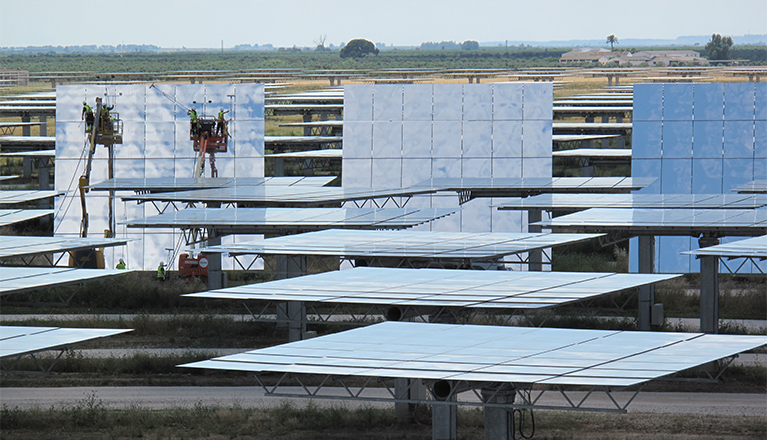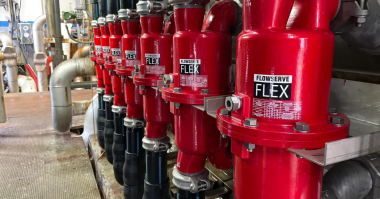This is the second in a two-part series exploring the selection of valves for solar power applications. The first article focused on how specially tailored control valves can overcome the challenges inherent in solar power production. This part will examine the materials used in manufacturing valves for solar power applications.
Concentrated solar power plants are aggressive environments rife with high temperatures, drastic temperature changes, excessive vibration, extreme characteristics and volatile ambient conditions. Flow management systems, especially piping system components, must be able to perform reliably within these aggressive environments, and the materials from which these valves are manufactured play a significant role in their collective success.
Solar power applications often use molten salts as a “transfer fluid” to transport and store the heat generated from concentrated sunlight. Molten salts are used because they are resistant to high temperatures, non-toxic and non-flammable. The valves that control this fluid play a vital role in solar energy production.
Due to the aggressive nature and extreme temperatures of molten salt, rotating equipment OEMs must use specific materials when manufacturing valves. The operating temperatures of the molten salts dictate the materials used in valve body construction. For example:
- C-steel grades to 427°C (800°F)
- Cr-Mo steel grades to 570°C (1058°F)
- Stabilized austenitic steel grades to 600°C (1112°F); stabilized austenitic stainless steel is required to avoid intercrystalline corrosion
- Nickel-based alloys for temperatures exceeding 600°C (1112°F)
Usually, the trim is made out of stainless steel or stabilized stainless steel at elevated temperatures. Alloy 6 is used to manufacture the guiding bush and the stem surface when wear and galling are concerns.
Carbon or graphite is not suitable for valves that come into direct contact with molten salts, given their strong oxidizing behavior.
Materials for valve support components
Distinctive designs and materials are required for gaskets and packing. OEMs often use graphite protected by an Inconel® braid for packing materials. A thin layer of release agent, designed for packing rings at high temperatures, could be applied to the inside surface of the packing area. The release agent acts as corrosion protection, improves tightness, and facilitates the replacement of the packing.
Because common materials such as mica do not have sufficient strength and tightness on their own, they are often used in combination with other materials to manufacture stuffing box systems. OEMs produce valve body and bonnet seals with metallic C-rings or O-rings because of their proven performance in aggressive environments.
Prohibiting transfer fluid crystallization
A challenge unique to solar power production is the need to maintain a minimum transfer fluid temperature. Should the heat transfer fluid crystallize or assume a solid state, it could damage the control valve. With molten salt, the temperature is constantly kept at least 50°C (122°F) above the salt’s melting temperature.
The upper temperature limit is around 300°C (572°F) for commonly used stuffing box systems, but some can withstand temperatures of 400°C (752°F). Excessive temperatures will reduce the lifetime of the stem seal and could damage the heat tracing equipment, so it’s important to regulate the lower and upper temperature limits to not allow the fluid to crystalize, and also not to compromise the valve stem.
Since the stem seal is a sensitive area, the temperature sensors should be located as close to the sealing system as possible to ensure the temperature remains within the defined limits in all operating states. The insulation material at the body or bonnet must also be suitable for the given temperatures.
Due to the aggressive ambient conditions within solar power plants, it’s critical to insulate the stuffing box to protect against wind and sand. And due to the higher maintenance effort required, the stuffing box system should also be easily accessible.
The solar power industry is highly competitive; efficiently storing energy and keeping the plant running after sunset are significantly advantageous. Flowserve can help concentrated solar power plants develop innovative solutions to increase efficiency and productivity.
For more information about how Flowserve can help you harness and store the power of the sun with proven solutions, visit https://www.flowserve.com/en/industries/power/concentrated-solar-power.




